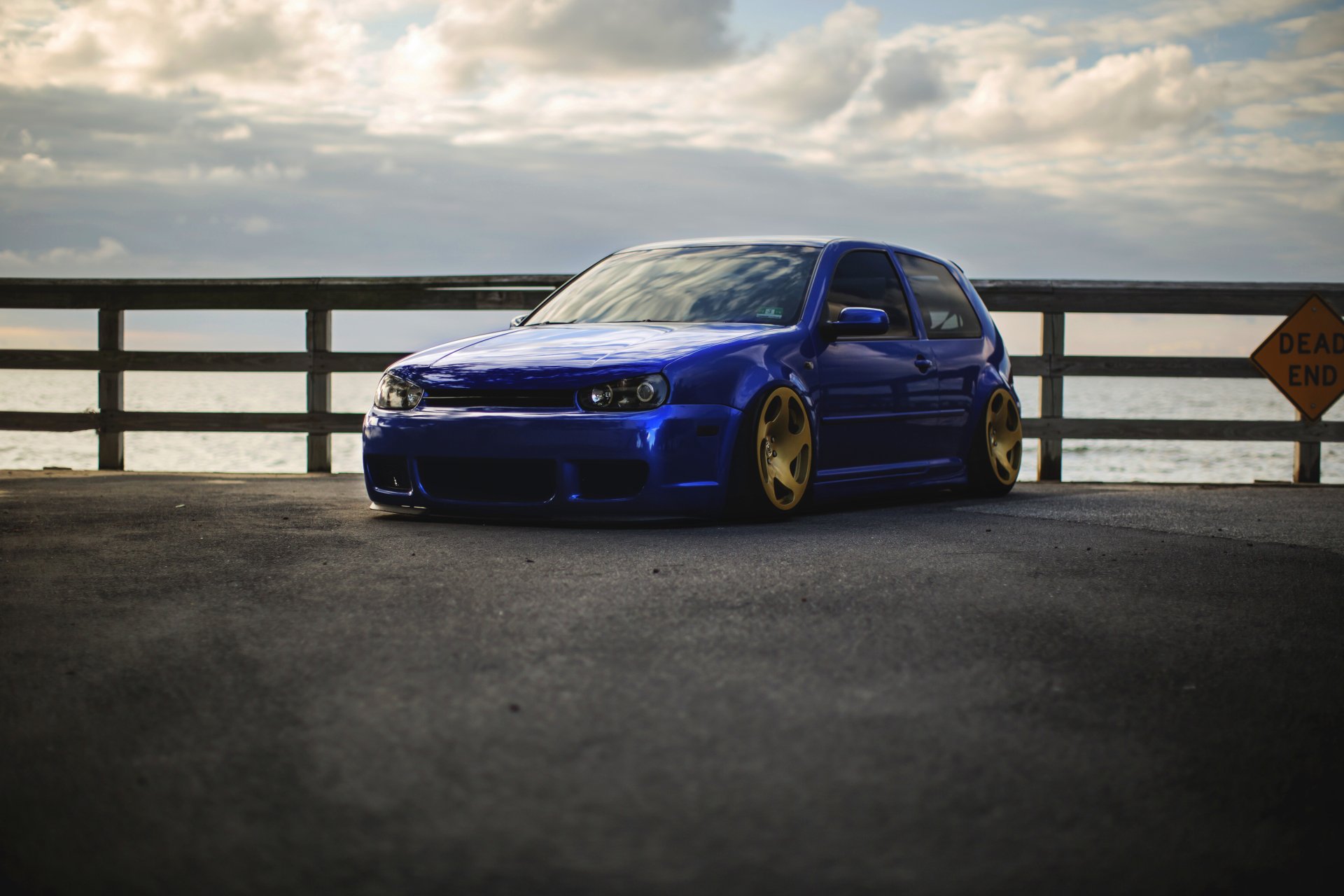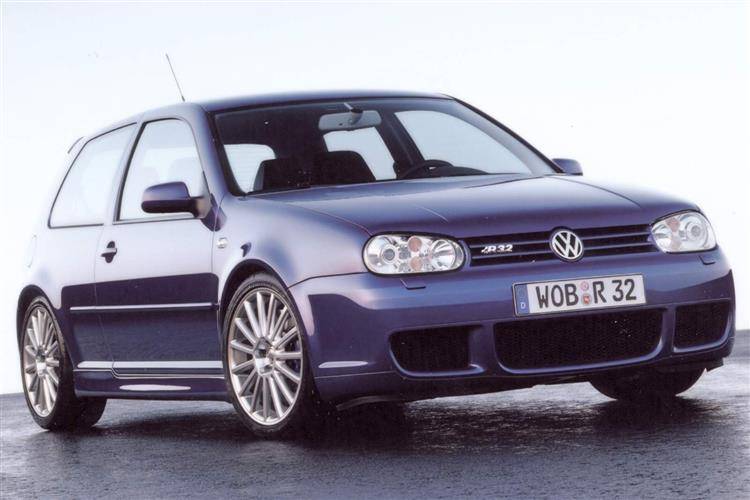Introduction
Although the Mk IV Golf didn't enjoy a great reputation as a sporting drive, look away from the GTi badge and there were some worthy candidates. The V5 models are well worth seeking out and the V6 4MOTION cars make fine high-speed cruisers. If you really want a Golf laden with a ton of attitude however, you owe it to yourself to track down a used Golf R32. It's a Golf like no other.
Models
Models Covered:
(3/5dr hatchback, 3.2-litre petrol)
History
Although the V5 had been campaigning since 1998, Volkswagen were in danger of being embarrassed for a serious performance Golf. The launch of a whole slew of superhatches with over 200bhp was the catalyst for the development of the Golf R32 and when it arrived, it became the one that all others were judged against. Whilst the Ford RS Focus and the Alfa Romeo 147 GTA attempted to put their power down through the front wheels, Volkswagen sensibly decided that 232bhp was a little too much to sensibly deploy through the front boots alone and ensured the R32 was based around an all-wheel drive system from the word go. With both three and five-door models available, the Golf R32 offers subtle speed and a lot more driver appeal than you may give it credit for. Retired in mid 2004 as preparations were made for the Volkswagen Golf Mk V, this model has the potential to become an underrated but very smart investment.
What You Get
There's a lot more to the R32 than serious horsepower, but the age-old formula of big engine in a small(ish) car still serves up the thrills. The 3.2-litre V6 engine fitted to the R32 is a massively revised version of the perennial 2.8-litre V6 (nee VR6) unit that powered upspec MK4 Golfs like the V6 4Motion. Bored and stroked to increase capacity, it was also destined for Volkswagen's own Touareg 4x4 and Porsche's Cayenne off roader as well as Volkswagen's Phaeton luxury cruiser. With a variable intake, a specialist intake manifold, a revised cylinder head design and exhaust camshaft adjustment, the R32's powerplant is up a full 33bhp on the 2.8-litre lump that spawned it.
The interior has been livened up from the usual coalhole Golf cabin. Ball burnished aluminium trim features on the pedal set, around the major instruments and inlaid into the dash and doors. There's also a large clutch footrest which, like the rest of the pedals, is inlaid with rubber 'R' logos. A monogrammed steering wheel, manually adjustable heated bucket seats and a choice of either leather or Alcantara trim in either grey or black are also standard. Buyers even get a special R32 umbrella that resides in the glovebox.
The exterior changes include a triple gaping maw of a front air intake, a lower ride height, 18-inch alloy wheels, unique front bumpers and side sills and the silver R32 badging on prow and posterior. Only one colour was available - Deep Blue Pearl metallic, blue intended to be the R motif. One advantage the R32 had over certain sporting rivals was the availability of a five-door body to complement the more popular three-door style.
What to Look For
Even if it's not 100% bulletproof, a Golf will always feel better built than its rivals and that counts for a lot. When buying used, look for a decent service record and check the obvious things like panel fit and so on. Golfs are favourites with car thieves, so it may well pay to get an HPI check. Fortunately the R32 has cultivated a mature image that deters the previous generation of boy racers - for the while at least. Pay close attention to odometer readings and look for the usual signs of intergalactic mileages. Also check the tyres to make sure there's plenty of life left in them and ensure the all-wheel drive system deploys without hesitation or jerkiness.
Replacement Parts
(approx based on a 2003 Golf R32) A clutch assembly will be around £175 and a new alternator should be close to £75. Brake pads front and rear are about £65 and £45, respectively. A replacement headlamp is close to £65. A windscreen should be in the region of £90. Major and minor services are around £95 and £55 respectively.
On the Road
Whilst the name may not be hugely exciting, the product most definitely is. Just when Ford's Focus RS thought it was getting a clear run at the premium performance hatch sector, Volkswagen spiked its guns. Granted, the Ford has a rawer, more sporting bias than the unapologetically opulent R32 but on pure performance terms, there's little to choose between them. The Golf hits 60mph in a twinkle under 6.5 seconds and will only stop accelerating at 153mph. 4Motion intelligent four wheel drive deploys the power to the tarmac cleanly and efficiently with a minimum of wheelspin, and it is here that the Volkswagen scores over its rival from Ford. Accelerating out of tight, wet corners, the all-wheel drive Golf just grips and goes, whereas even Ford's trick Quaife differential can't perform such miracles.
The Volkswagen feels even quicker than the figures would suggest, with a massive surge of mid range torque flinging it up the road. Two gearchanges are required in the sprint to 60mph, the close ratio six-speed gearbox being like so many other Volkswagen units, i.e. somewhat notchy but always positive. The steering is a revelation. Unlike many Golfs, which seem to offer a certain resistance in lieu of genuine feel, the R32 has a much sharper helm, due in no small part to the Audi TT steering rack being appropriated. At 2.6 turns as opposed to 3.0 turns lock to lock, you'll find the nose of the R32 surprisingly lively for something incorporating such a hefty hunk of metalwork.
The ride isn't what you'd describe as lithe, with a good deal of bump and thump being transmitted into the cabin. On a smooth road, it makes devastating progress and corners very flat and true, but on scabbier surfaces you'll be tempted to really fly the R32 into a rhythm that skips over the worst of the ruts and potholes. Volkswagen has tinkered with the electronic stability control program so that it intervenes later and more subtly, allowing the skilled driver to extract significant enjoyment from cornering without heavy-handed digital admonishment. The brakes possess a savage bite, the blue callipers looking suitably racy as they peek through multispoke alloy wheels.
Overall
If you're after a performance bargain, the Volkswagen Golf R32 is not it. A £6,000 Subaru Impreza STi would easily be able to leave it for dead on a twisty road. What the R32 does represent is a refined and surprisingly good fun sports hatch that packs a sledgehammer overtaking punch and all-weather capabilities. It still feels indestructibly well built and makes a very covetable ownership proposition. As good as the latest Golf 2.0T GTi is, it never feels quite as naughty as the old R32. This could be one to lay down for future consumption.
written by: ANDY ENRIGHT














